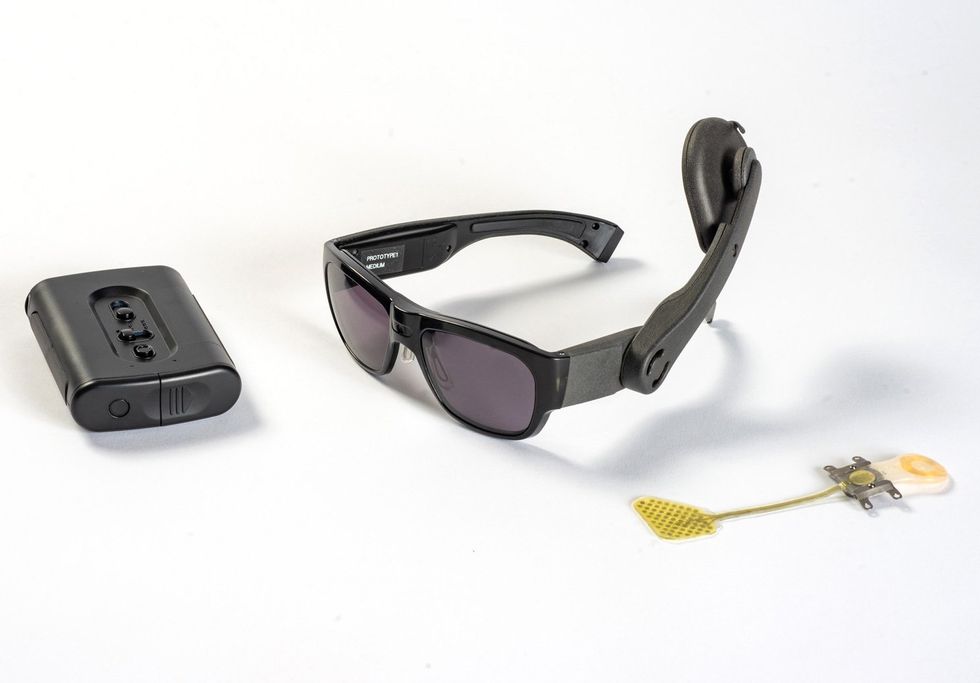When California biotech company Second Sight ran out of money in 2020, the future looked dim for hundreds of blind users around the world relying on its Argus II retinal implant, or its next-generation Orion brain implant, for some approximation of vision.
Last year, IEEE Spectrum documented the journeys of users as they attempted to get support for their tiny implants, and the glasses and wearable computers that enabled them. Some managed to cobble together working systems from leftover components, others vowed to keep using the implants for as long as possible, and a few even had the obsolete gadgets removed from their heads.
Although Second Sight had ceased virtually all operations, there was a glimmer of light with the prospect of a merger with biotech startup Nano Precision Medical, which was developing its own implant for drug delivery. That merger was completed last August, and Second Sight’s technologies are now set to be spun out into their own company once more, this time called Cortigent.
For the original Argus II users, it should mean a steady (if dwindling) supply of replacement parts, although Cortigent will not be developing or building any retinal-device upgrades from the proceeds of an upcoming initial public offering on Nasdaq. Instead, the US $15 million offering will fund ongoing development of the Orion brain implant for bringing vision to some blind people, as well as repurposing the technology for a new device intended to help people recover mobility after suffering a stroke.
“From a commercial standpoint and also a clinical need, stroke represents a really attractive way to leverage our implant technology,” says Jerry Ok, one of Cortigent’s co–chief technology officers. “Commercially, there’s nothing else like it in the world.”
The idea of using an implant to stimulate the surface of the brain—the cortex—to help people regain motor skills after a stroke is not new. When a blood vessel in a person’s motor cortex bursts, they can lose the ability to move their hands, fingers, and wrists. Such strokes afflict hundreds of thousands of people annually in the United States alone.
Studies in animals have long suggested that electrically stimulating the motor cortex might induce plasticity, which is the natural ability of the brain to create new pathways between its remaining neurons, thus restoring some function. In the early 2000s, Jeffrey Balzer, a clinical neurophysiologist at the University of Pittsburgh, was working at a startup called Northstar Neuroscience to develop a cortical brain stimulator for human stroke rehabilitation.
“When we put those stimulators in patients, we had a few patients who got just remarkably better,” Balzer told IEEE Spectrum. “It works, we could definitely drive plasticity. It just didn’t work as well as we thought it would.”
Northstar’s Renova device sailed through phase one and phase two clinical trials, showing safety and efficacy, but failed to demonstrate a significant benefit over existing physical therapies in its phase three trial.
This time is different, according to Uday Patel, Cortigent’s other co-CTO. “The Northstar device only had a single driver, and they had trouble placing exactly where they could stimulate on the motor cortex,” he says. “Because our device has 60 independent channels, we’ll be able to create a much larger array, spanning more of the motor cortex and able to target stimulation very, very specifically to the intended location.”
In April, Cortigent applied to the U.S. Food and Drug Administration for a Breakthrough Device designation for its stroke recovery technology, a process that could speed up development, assessment, and ultimately approval of the implant. In filings with the U.S. Securities and Exchange Commission, Cortigent wrote that it intends to begin an early feasibility study of the system in mid-2025, followed by a clinical trial in 2026, and a commercial launch as soon as 2028.
Cortigent is not abandoning the original idea of cortical stimulation to help some blind people, either. Although only three of the original six Orion clinical trial users were still using their devices at the end of a five-year feasibility study in 2022, Cortigent has extended that study for another year. “We still have patients who are engaged and want to use it,” says Patel. The company believes it could bring Orion to market by 2027.

Balzer, who has no connection with Cortigent, is impressed with the specifications of the new stroke device but sees challenges ahead. “If you’ve got 60 contacts, you’ve got a tremendous amount of permutations that you can try to see if it delivers what you want,” he says. “But the key to having success with this stimulation is the type of stimulation you do. This is very, very different than a retinal implant driving vision. This is a complete 180.”
The downsizing and merger of Second Sight saw the business shed its entire manufacturing operation and most of its researchers, engineers, and technicians. Cortigent now has just 14 staff, and will have to rely on contract manufacturers to build all future Orion and stroke implants.
It is also reentering a space bustling with new concepts, technologies, and rivals. Researchers are harnessing signals from the motor cortex to give paralyzed patients new abilities, and stimulating other parts of the nervous system to help stroke patients. Perhaps most significantly, Elon Musk’s Neuralink recently got clearance from the FDA for the first clinical trial of its brain interface. Last December, Musk said that the device’s first two applications would be stimulating the visual cortex to help some blind people, and improving communication for people with severe paralysis.
Despite the competition, Cortigent’s CTOs believe they are still one step ahead. “One major advantage we have is a proven track record of safety and reliability for our devices,” says Ok. “The FDA is well aware of what we’ve been able to do in terms of safety and device reliability, and essentially we’re just leveraging that technology into the Orion and the stroke device.”
A date for Cortigent’s IPO has yet to be set.
- Should Right-to-Repair Laws Extend to Bionic Body Parts? ›
- Their Bionic Eyes Are Now Obsolete and Unsupported ›
- Will Their Bionic Eyes Be Obsolete and Unsupported Too? - IEEE Spectrum ›
- Bionic Eye Gets a New Lease of Life - IEEE Spectrum ›
- Neuralink's Blindsight Implant Won't Deliver Natural Sight - IEEE Spectrum ›
Mark Harris is an investigative science and technology reporter based in Seattle, with a particular interest in robotics, transportation, green technologies, and medical devices. He’s on Twitter at @meharris and email at mark(at)meharris(dot)com. Email or DM for Signal number for sensitive/encrypted messaging.



